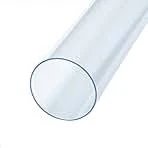Դկտ . 09, 2024 17:38 Back to list
HDPE Pipe Couplings for Reliable and Durable Connections in Water Supply Systems
Understanding HDPE Pipe Couplings A Comprehensive Overview
High-Density Polyethylene (HDPE) pipe couplings play a critical role in the infrastructure of modern piping systems. Known for their durability and flexibility, HDPE pipes are widely used in various applications, including water supply, sewage systems, and industrial processes. With the increasing demand for reliable and efficient piping solutions, understanding the significance of HDPE pipe couplings is essential for engineers, contractors, and environmentalists alike.
What Is HDPE Pipe Coupling?
A coupling is a fitting that connects two lengths of pipe, allowing for the continuation of fluid flow. In the case of HDPE pipes, couplings are specifically designed to join sections while maintaining the material's integral properties, such as resistance to corrosion and flexibility. These couplings come in various forms, including socket fusion, butt fusion, and electro-fusion, each suitable for different installation methods and applications.
Advantages of HDPE Couplings
One of the primary benefits of using HDPE pipe couplings is their durability. HDPE is resistant to chemicals, UV radiation, and impact, making it an excellent choice for both above-ground and underground installations. Couplings made from HDPE also minimize the risk of leaks, as they create a solid, unified structure that withstands pressure and thermal expansion.
Another notable advantage is the flexibility of HDPE pipes and their couplings. This flexibility allows for bends and turns in the piping system without the need for additional fittings, which can reduce the overall cost and time of installation. Moreover, the lightweight nature of HDPE makes handling and installation easier compared to traditional materials like metal or concrete.
Installation Methods
hdpe pipe coupling

The installation of HDPE couplings can be achieved through various techniques, each with its unique advantages.
1. Socket Fusion This method involves heating the ends of the pipes and the coupling until they melt, then pressing them together to form a joint. Socket fusion is commonly used for smaller diameter pipes.
2. Butt Fusion In this technique, the ends of two pipe sections are heated and then pressed together. This method is widely favored for larger diameter pipes and offers a strong, leak-proof connection.
3. Electro-Fusion This process uses a specially designed coupling with built-in electrical resistance coils. When current is applied, the coils heat up and melt the pipes' surfaces, creating a secure bond. This method is especially useful in tight or hard-to-reach spaces.
Applications
HDPE pipe couplings are vital in various sectors, including municipal water supply, irrigation, and wastewater management. They are also used in industrial applications, such as chemical processing and mining, where the durability and chemical resistance of HDPE become crucial. Furthermore, due to the light weight and strength of HDPE, these couplings are ideal for installations that require resilience against harsh environmental conditions.
Conclusion
In summary, HDPE pipe couplings are essential components in modern piping systems, providing a reliable means of connecting sections of HDPE pipes. Their advantages, including durability, flexibility, and ease of installation, make them a preferred choice in various applications. As infrastructure development continues to evolve, understanding the role and benefits of HDPE couplings will be increasingly important for those involved in engineering and construction. By leveraging the unique properties of HDPE, industry professionals can ensure the longevity and efficiency of piping systems designed to meet today's challenges.
-
HDPE Natural Sheet: Durable, Food-Grade & Versatile Plastic Solutions
NewsAug.27,2025
-
Durable Glossy PVC Rigid Sheet | Premium High-Shine Panels
NewsAug.26,2025
-
Durable PP Rigid Sheet: Lightweight, Chemical Resistant Solutions
NewsAug.21,2025
-
PVC Grey Sheet for Extraction: Chemical Resistant & Durable
NewsAug.19,2025
-
Durable PVC Pipe Fittings for Plumbing & Irrigation Needs
NewsAug.18,2025
-
HDPE Steel Belt Reinforced Spiral Corrugated Pipe | High Strength
NewsAug.17,2025

